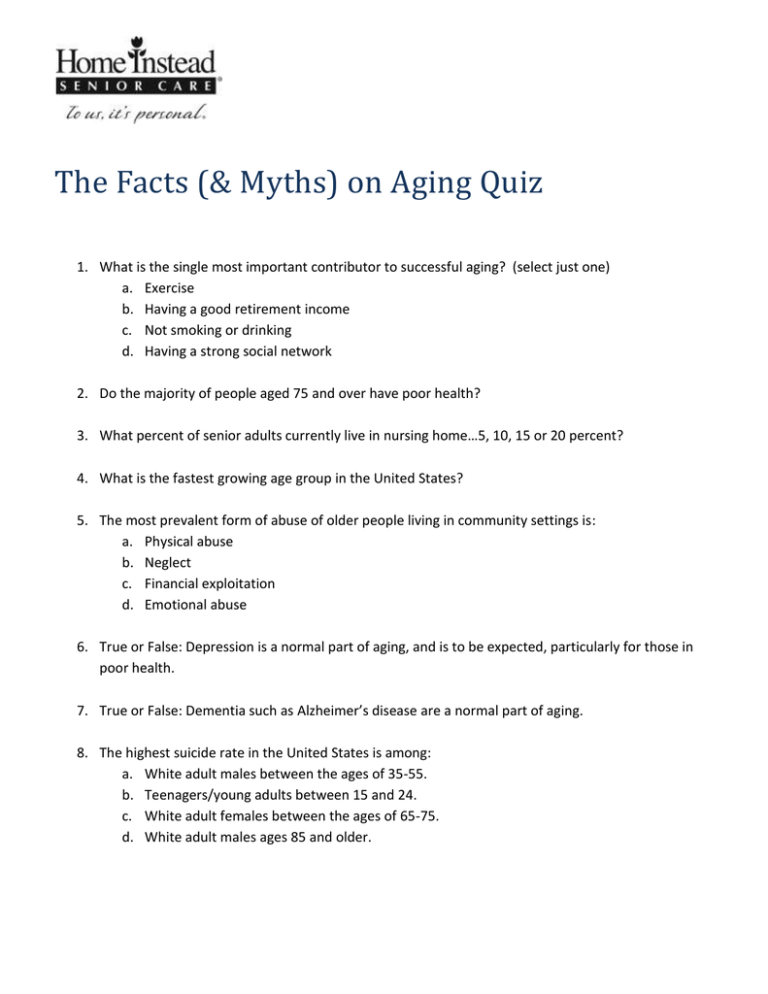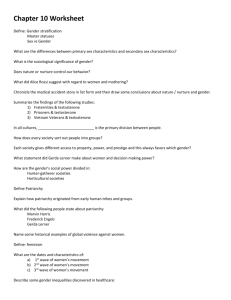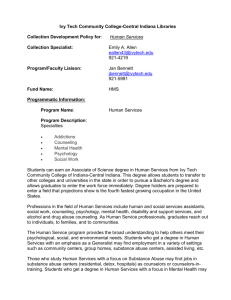The Facts (& Myths) on Aging Quiz
advertisement

The Facts (& Myths) on Aging Quiz 1. What is the single most important contributor to successful aging? (select just one) a. Exercise b. Having a good retirement income c. Not smoking or drinking d. Having a strong social network 2. Do the majority of people aged 75 and over have poor health? 3. What percent of senior adults currently live in nursing home…5, 10, 15 or 20 percent? 4. What is the fastest growing age group in the United States? 5. The most prevalent form of abuse of older people living in community settings is: a. Physical abuse b. Neglect c. Financial exploitation d. Emotional abuse 6. True or False: Depression is a normal part of aging, and is to be expected, particularly for those in poor health. 7. True or False: Dementia such as Alzheimer’s disease are a normal part of aging. 8. The highest suicide rate in the United States is among: a. White adult males between the ages of 35-55. b. Teenagers/young adults between 15 and 24. c. White adult females between the ages of 65-75. d. White adult males ages 85 and older. Answers to the Aging Quiz 1. 2. 3. 4. 5. 6. 7. 8. A-exercise No 5% 85+ C-financial exploitation False False D-white adult males ages 85 and older For detailed answers to the Aging Quiz, go to www.homeinstead.com/307. Go to Senior Care Resources tab and click on “local resources" tab. Answers to the Aging Quiz 1. Exercise – According to Rose and Kahn, authors of the book Successful Aging (Dell, 1998), the results of the MacArthur Foundation Study on Aging show that physical fitness is at the crux of successful aging, regardless of other factors. However, other very important factors include maintaining disease and disability prevention strategies, maintaining mental functioning, and active engagement in life through friends and productive activities. 2. No – 66 percent of individuals aged 75 and older self report that their health is either good or very good. Only 34 percent report fair or poor health, according to the National Council on Aging 2002 update on American Perceptions of Aging in the 21st Century (NCOA, 409 Third St., SW, Washington, D.C.; www.ncoa.org.) 3. Between 4 and 5 percent of all senior adults aged 65 and older are currently living in nursing homes. However, with increasing age, the chances that an older adult will need the services of a nursing facility increase, sometimes for only a short period of recuperation after an illness, other times for long-term care. (statistics from A Profile of Older Americans: 2000 by the Administration on Aging, U.S. Department of Health and Human Services) 4. According to the U.S. Census Bureau, those individuals aged 85 and older are the fastest growing age group by percentage. It is predicted that there may be at least 600,000 centenarians by mid-century. There were 50,454 centenarians in the year 2000, according to the U.S. Census. 5. Financial exploitation – According to the Illinois Department on Aging Elder Abuse and Neglect Program Annual Report for 2002, victims generally experience more than one type of abuse, but reports of financial exploitation were present in 55 percent of total reports, followed by emotional abuse at 45 percent. Neglect was cited in 36.4 percent of reports, and physical abuse was reported in 19.5 percent of the 7,425 reports received. 6. False – Estimates indicate that major depression may decline with advancing age, but that between 8 and 20 percent of the aging population have depressive symptoms, and that as many as 37 percent of older patients in primary care may have such symptoms. Depression can be difficult to diagnose in older adults for several reasons, including co-occurrence of other disorders, and because it may present somewhat differently than among other age groups. Poor health or other life events may be triggers for depression, but depression is not a normal part of aging. (Mental health: A Report of the Surgeon General, 1999, Chapter 5, pp 346-348) 7. False – However, it is a strongly age-related disease. While only 5 percent of the total population aged 60 and older are estimated to have Alzheimer’s disease, some 30-45 percent of the population over age 85 may have the disease. (Mental Health: A Report of the Surgeon General, 1999, p. 361) 8. White males of all age groups actually have highest suicide rate when characterized by gender and race from the age of 10 onward. The highest suicide rate of all is for white males age 85 and older –59 deaths per 100,000 persons, more than 5 times the overall suicide rate of 10.6 deaths per 100,000 persons. (Source: National Institute of Mental Health U.S. Suicide Rates by Age, Gender, and Racial Group, using 2001 figures) Information source: Egyptian Agency on Aging For more information about aging or services for senior adults, call your local senior center, Area Agency on Aging or Home Instead Senior Care at www.homeinstead.com/307.



